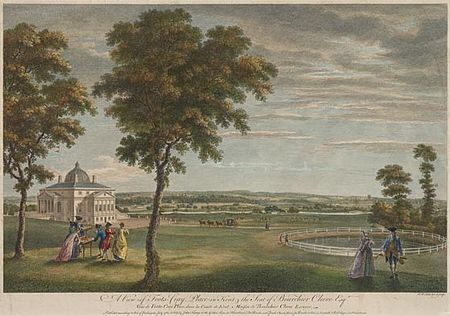Foots Cray Place

Foots Cray Place was one of the four country houses built in England in the 18th century to a design inspired by Palladio's Villa Capra near Vicenza. Built in 1754 near Sidcup, Kent, Foots Cray Place was demolished in 1950 after a fire in 1949. Of the three other houses in England, Nuthall Temple in Nottinghamshire was built 1757 and demolished in 1929; the other two survive: Mereworth Castle (completed 1725, also in Kent) and Chiswick House (completed 1729, in London), both now Grade I listed buildings. A modern fifth example, Henbury Hall, was built near Macclesfield in the 1980s. Another example of a similar structure in England is the Temple of the Four Winds at Castle Howard, which is a garden building not a house.
Excerpt from the Wikipedia article Foots Cray Place (License: CC BY-SA 3.0, Authors, Images).Foots Cray Place
Bexley Lane, London Albany Park (London Borough of Bexley)
Geographical coordinates (GPS) Address Nearby Places Show on map
Geographical coordinates (GPS)
| Latitude | Longitude |
|---|---|
| N 51.427 ° | E 0.12 ° |
Address
Cleeve Park School
Bexley Lane
DA14 4JN London, Albany Park (London Borough of Bexley)
England, United Kingdom
Open on Google Maps





